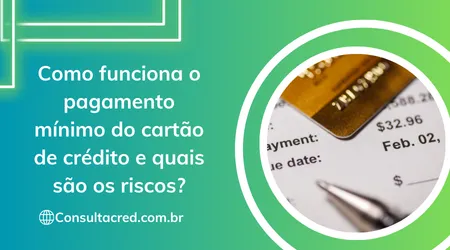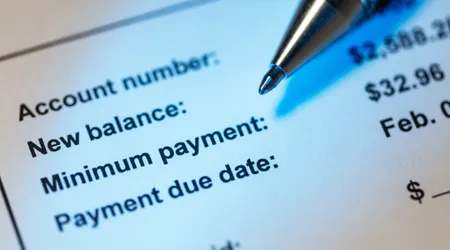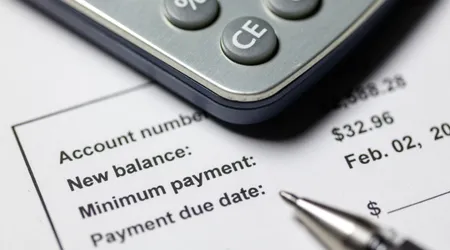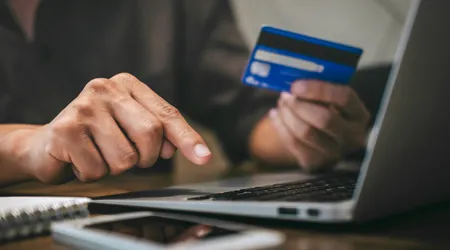
THE Credit Card Minimum Payment It is an option that many consumers use to manage their finances, especially in times of financial hardship.
Advertisements
However, while this may seem like a practical solution, it can carry significant risks in the long run.
In this article, we’ll explore how minimum payments work, the apparent benefits, and the hidden dangers they can pose to your financial health.
Additionally, we will present tables with detailed information to help you make more informed decisions.
Continue reading and find out more:
What is the Credit Card Minimum Payment?

THE Credit Card Minimum Payment is the lowest amount you can pay monthly to keep your account up to date.
In this sense, avoiding fines and the inclusion of your name in credit protection services.
This amount usually corresponds to a percentage of the total invoice, which can vary between 10% and 20%, depending on the financial institution.
Additionally, it includes charges such as interest, fees and a small portion of the outstanding balance.
However, it is important to highlight that the minimum payment is not an efficient way to pay off your debt.
By opting for this option, you are basically postponing the full payment of the bill, which can result in an accumulation of compound interest.
In other words, you end up paying much more than the original purchase price.
To better illustrate, imagine that you have an invoice for R$ 1,000.00 and choose the minimum payment of 15%.
++ How to Teach Your Kids About Money (Before It's Too Late)
In this case, you would pay R$ 150.00, but interest on the remaining R$ 850.00 would be added to your next bill.
In short, this cycle can repeat itself indefinitely, creating a financial snowball.
How is the Minimum Payment Calculated?

The calculation of the Credit Card Minimum Payment varies according to the policy of each bank or card operator.
However, the formula usually includes a percentage of the outstanding balance, interest, administrative fees and, in some cases, a fixed installment.
For example, if the outstanding balance is R$ 2,000.00 and the minimum percentage is 15%, the minimum payment would be R$ 300.00.
Furthermore, it is common for banks to adopt an absolute minimum value, even if the percentage results in a lower value.
For example, if the minimum payment calculation results in R$ 50.00, but the bank sets a minimum amount of R$ 100.00, you will need to pay R$ 100.00.
This practice aims to ensure that the client contributes significantly to debt reduction.
To make it easier to understand, see the table below with examples of how the minimum payment can be calculated in different scenarios:
| Outstanding Balance | Minimum Percentage | Absolute Minimum Value | Minimum Payment |
|---|---|---|---|
| R$ 1,000.00 | 15% | R$ 100.00 | R$ 150.00 |
| R$ 500.00 | 15% | R$ 100.00 | R$ 100.00 |
| R$ 2,500.00 | 10% | R$ 150.00 | R$ 250.00 |
What Are the Risks of Minimum Payment?

Although the Credit Card Minimum Payment seems like a convenient option, it can be a financial trap.
Therefore, one of the main risks is the accumulation of compound interest, which can cause your debt to grow exponentially.
++ How to Make Money as an Affiliate: A Beginner's Guide
When you pay only the minimum, interest is calculated on the remaining balance, and this amount is added to your next bill.
Over time, you may end up paying several times the original purchase price.
Furthermore, another significant risk is the negative impact on your credit score.
While paying the minimum payment will prevent your name from being listed on credit reporting agencies, it will not improve your financial reputation.
On the contrary, banks and financial institutions may interpret the minimum payment as a sign of financial difficulty.
In other words, this could make it difficult to approve loans and financing in the future.
Additionally, minimum payments can create a vicious cycle of debt.
By prioritizing the minimum payment, you may be tempted to continue using your credit card, further increasing your outstanding balance.
In short, this behavior can lead to an unsustainable situation where you find yourself trapped in a spiral of debt.
How to Avoid Minimum Payment Risks?
To avoid the risks associated with Credit Card Minimum Payment, it is essential to take a proactive approach to your finances.
One of the best strategies is to prioritize paying your bill in full whenever possible.
This way, you avoid accumulating interest and keep your financial health up to date.
Furthermore, another valuable tip is to create a detailed monthly budget, including all your expenses and income.
This allows you to identify areas where you can reduce spending and allocate more resources to paying off your credit card.
++ PLR and Additional Benefits: Discover the Benefits that Increase Your Income at Work
Additionally, consider negotiating with your bank to get a lower interest rate or an installment plan that better suits your financial situation.
Finally, it is important to have discipline and avoid excessive use of your credit card.
If you find yourself accumulating debt, it may be helpful to limit your card usage or even leave it at home for a while.
In short, remember that a credit card is a powerful financial tool, but it must be used responsibly.
Alternatives to Minimum Payment
If you are concerned about the risks of Credit Card Minimum Payment, there are alternatives that can help you manage your debts more efficiently.
One option is to pay your bill in installments, which allows you to divide the total amount into several installments with reduced interest.
Although there are still additional costs, this alternative may be more advantageous than just paying the minimum.
Additionally, another alternative is to take out a personal loan to pay off your credit card debt.
In many cases, the interest on a loan is lower than that on a card, which can result in significant savings in the long run.
However, it is important to compare interest rates and payment terms before making this decision.
Finally, you may want to consider transferring your debt to a card with a lower interest rate.
Many banks offer balance transfer promotions, with reduced interest or even interest exemption for a limited period.
This strategy can be an effective way to reduce the cost of debt and make it easier to pay off.
Credit Card Minimum Payment: Conclusion
THE Credit Card Minimum Payment It may seem like a practical solution in times of financial difficulty, but it is important to be aware of the associated risks.
The accumulation of compound interest, the negative impact on your credit score and the vicious cycle of debt are just some of the dangers that this practice can pose.
To avoid these issues, it’s crucial to take a proactive approach to your finances, prioritizing paying your bill in full whenever possible.
Additionally, consider alternatives such as paying your bill in installments, taking out a personal loan or transferring your balance to a card with lower interest rates.
Remember that a credit card is a powerful financial tool, but it must be used responsibly.
By making conscious and informed decisions, you can avoid the risks of minimum payments and keep your financial health in check.
Comparison Chart: Minimum Payment vs. Full Payment
To illustrate the differences between minimum payment and full payment, see the comparison table below:
| Description | Minimum Payment | Full Payment |
|---|---|---|
| Invoice Amount | R$ 1,000.00 | R$ 1,000.00 |
| Amount Paid | R$ 150.00 | R$ 1,000.00 |
| Monthly Interest | 15% | 0% |
| Remaining Balance | R$ 850.00 | R$ 0.00 |
| Accumulated Interest (1 year) | R$ 1,530.00 | R$ 0.00 |
| Total Paid (1 year) | R$ 2,530.00 | R$ 1,000.00 |
As you can see, paying in full results in significant savings in the long run, while paying the minimum amount can lead to accumulating debt and exorbitant interest.
Credit Card Minimum Payment: Frequently Asked Questions
1. What happens if I only pay the minimum on my credit card?
By paying only the minimum, you avoid fines and having your name included in credit protection services, but the remaining balance will be subject to interest, which can result in an accumulation of debt.
2. Can I negotiate the minimum payment amount with the bank?
Yes, in some cases it is possible to negotiate with the bank to obtain a lower minimum payment amount or an installment plan with reduced interest.
3. What is the best alternative to minimum payment?
The best alternative depends on your financial situation.
However, options such as paying your bill in installments, taking out a personal loan or transferring your balance to a card with lower interest rates may be more advantageous.
4. How can I avoid accumulating credit card debt?
To avoid accumulating debt, prioritize paying your bill in full, create a monthly budget and avoid excessive use of your credit card.
5. Does the minimum payment affect my credit score?
Although making a minimum payment will prevent your name from being listed on credit reporting services, it will not improve your credit score and could be interpreted as a sign of financial difficulty.
By understanding how it works Credit Card Minimum Payment and the associated risks, you can make more informed decisions and protect your financial health.
Finally, remember that knowledge is the best tool to avoid financial pitfalls and ensure a safer and more stable future.
